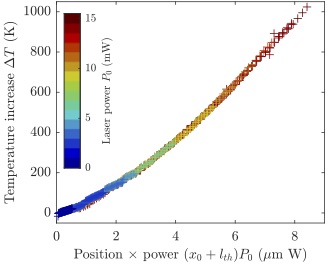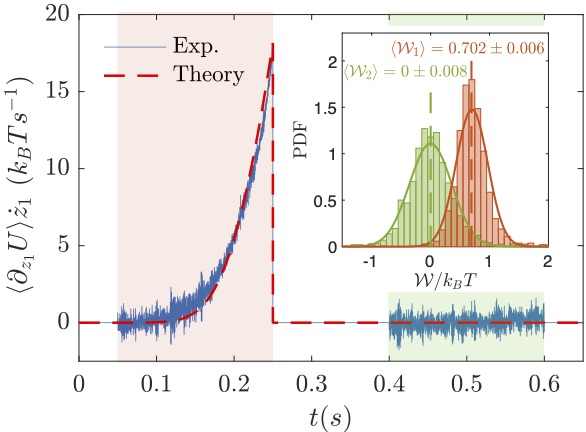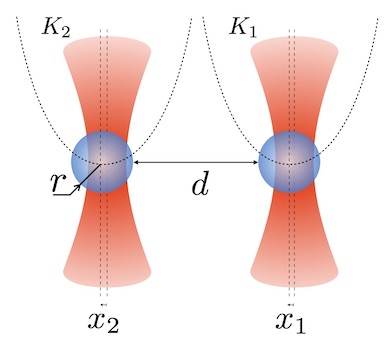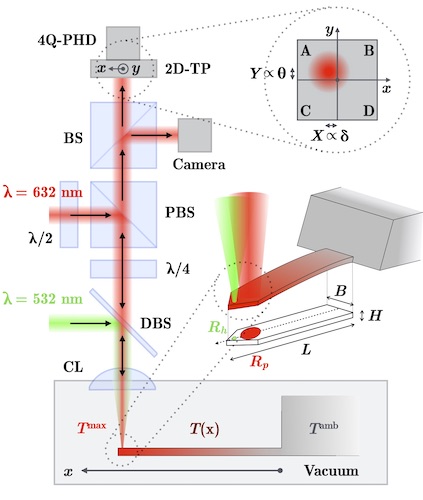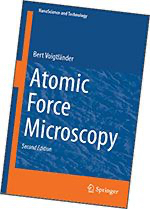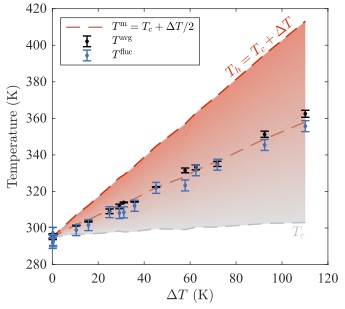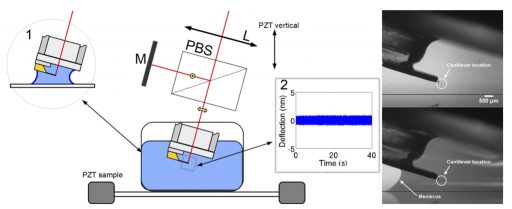Basile Pottier and Ludovic Bellon, SciPost Phys. 10, 120 (2021)
[Article] doi: 10.21468/SciPostPhys.10.5.120
[Data set] doi: 10.5281/zenodo.4703793
We report a thermo-optical bistability observed in silicon micro-cantilevers irradiated by a laser beam with mW powers: reflectivity, transmissivity, absorption, and temperature can change by a factor of two between two stable states for the same input power. The temperature dependency of the absorption at the origin of the bistability results from interferences between internal reflections in the cantilever thickness, acting as a lossy Fabry-Pérot cavity. A theoretical model describing the thermo-optical coupling is presented. The experimental results obtained for silicon cantilevers irradiated in vacuum at two different visible wavelengths are in quantitative agreement with the predictions of this model.


